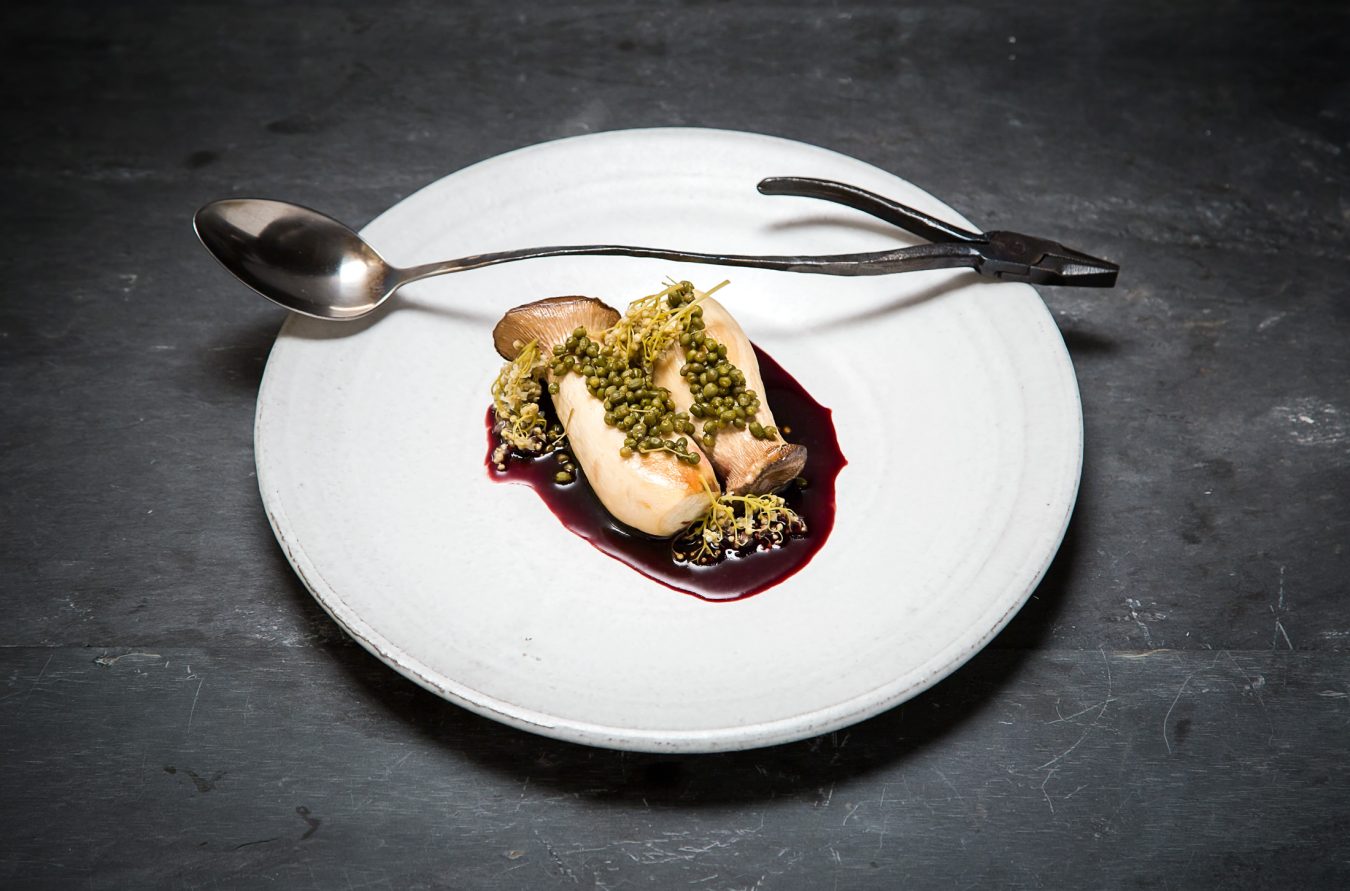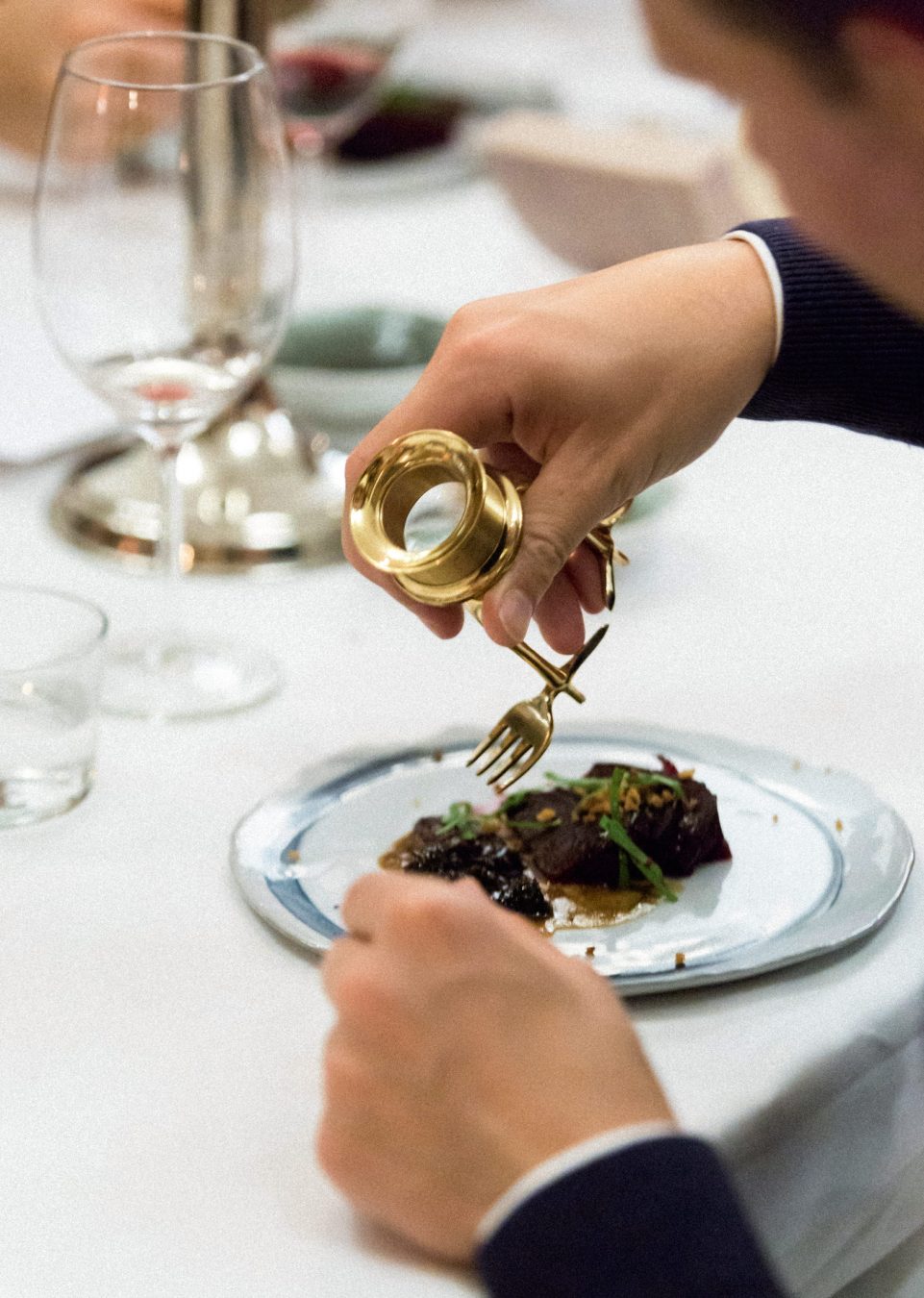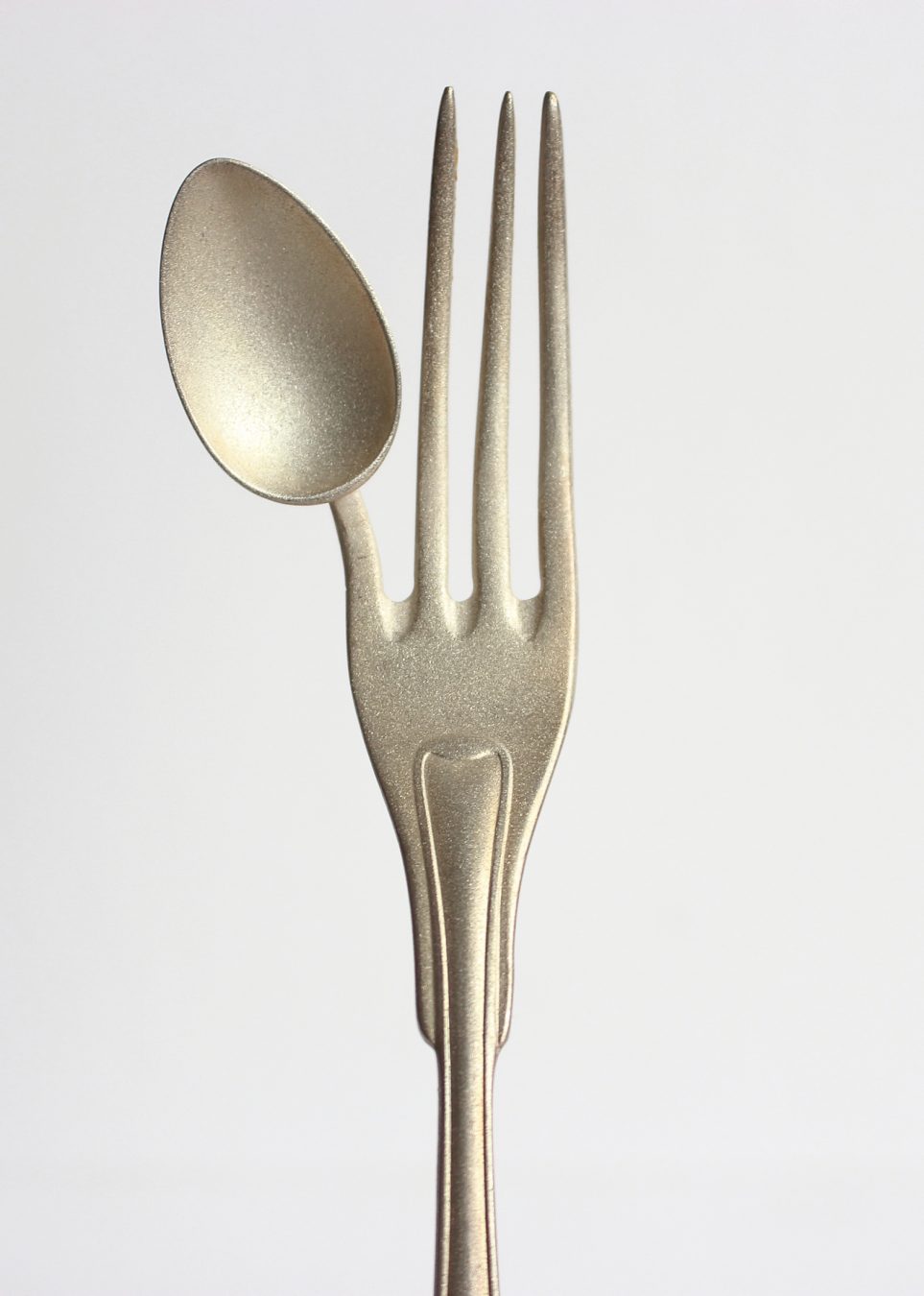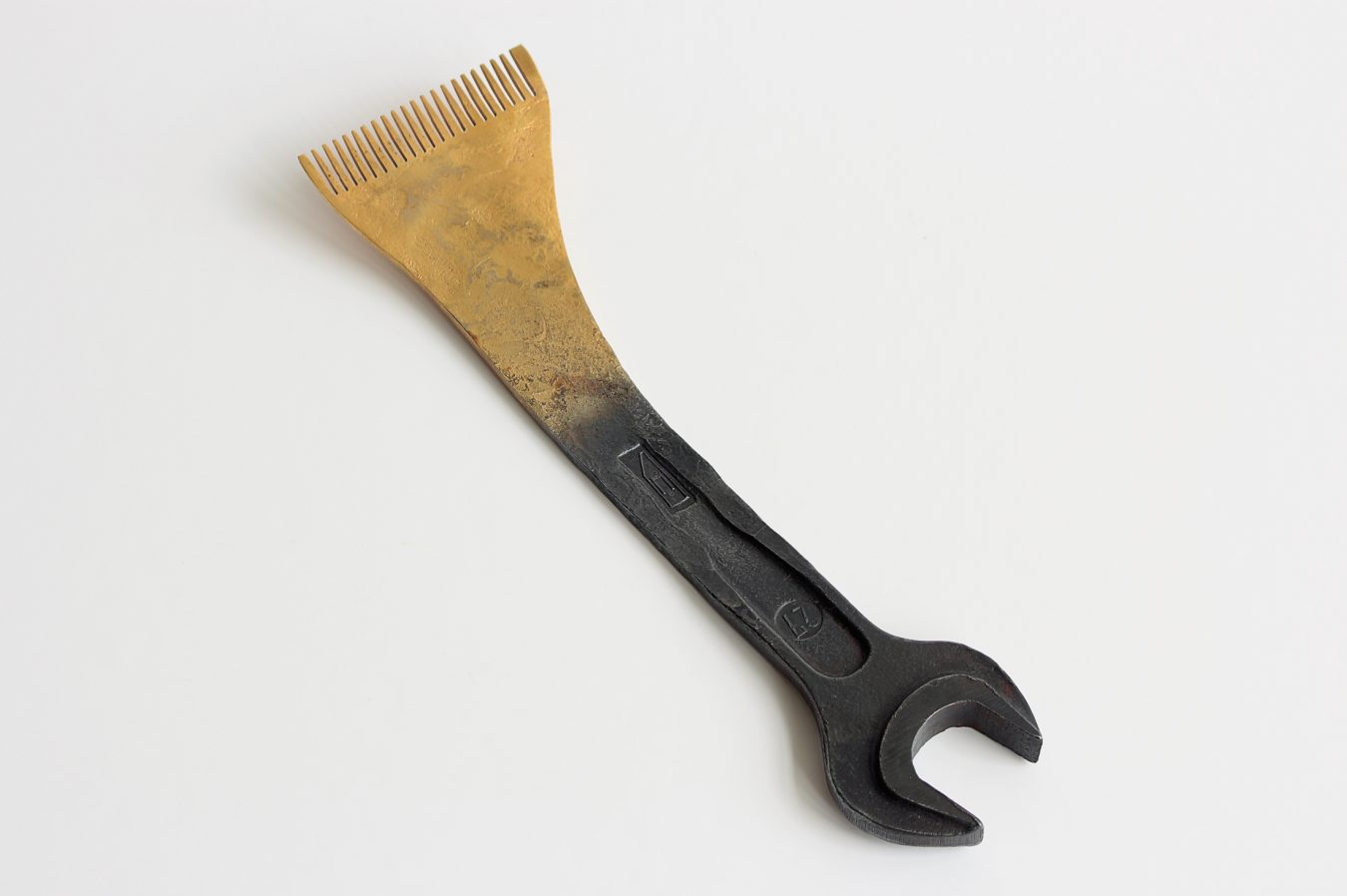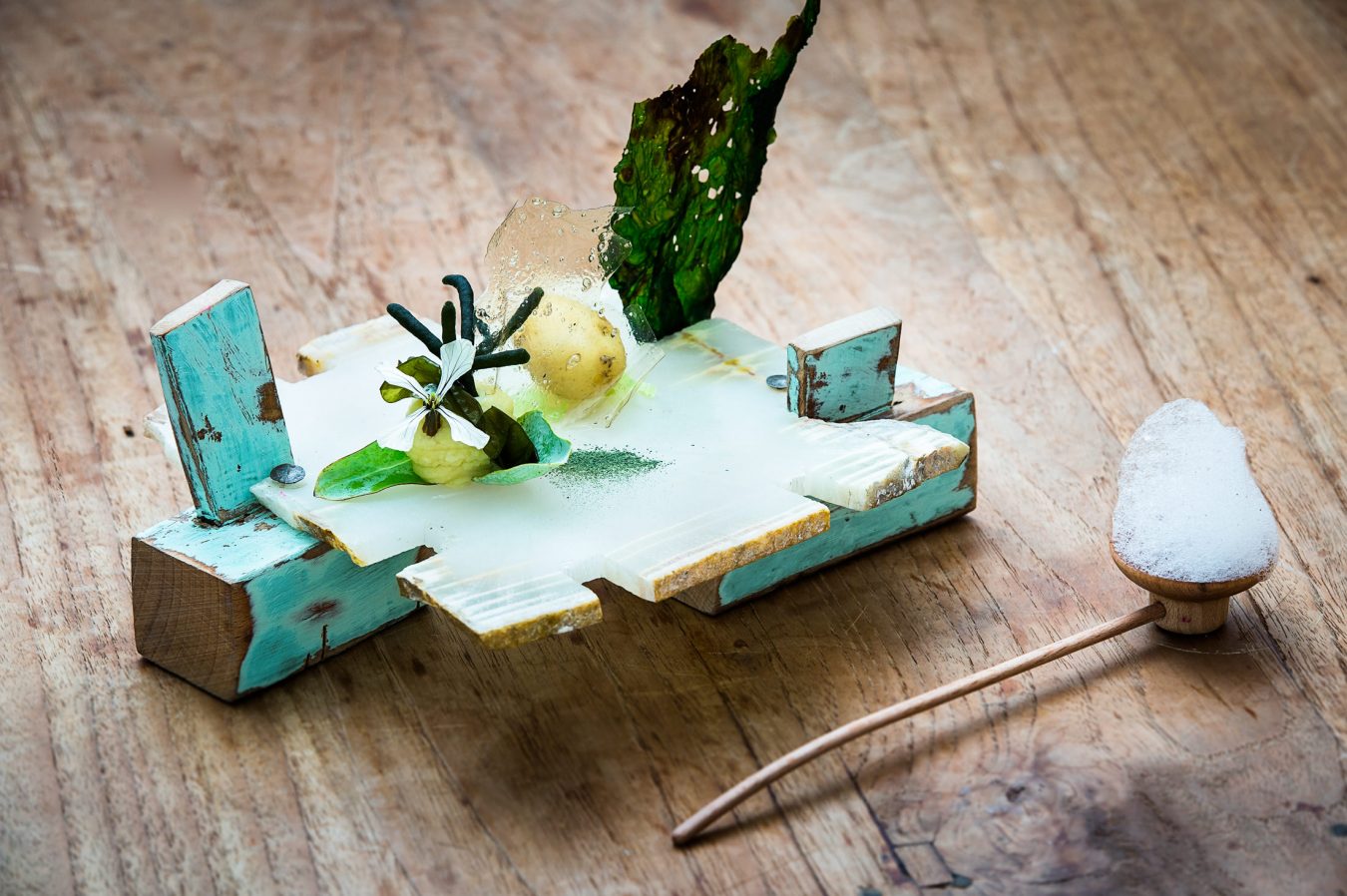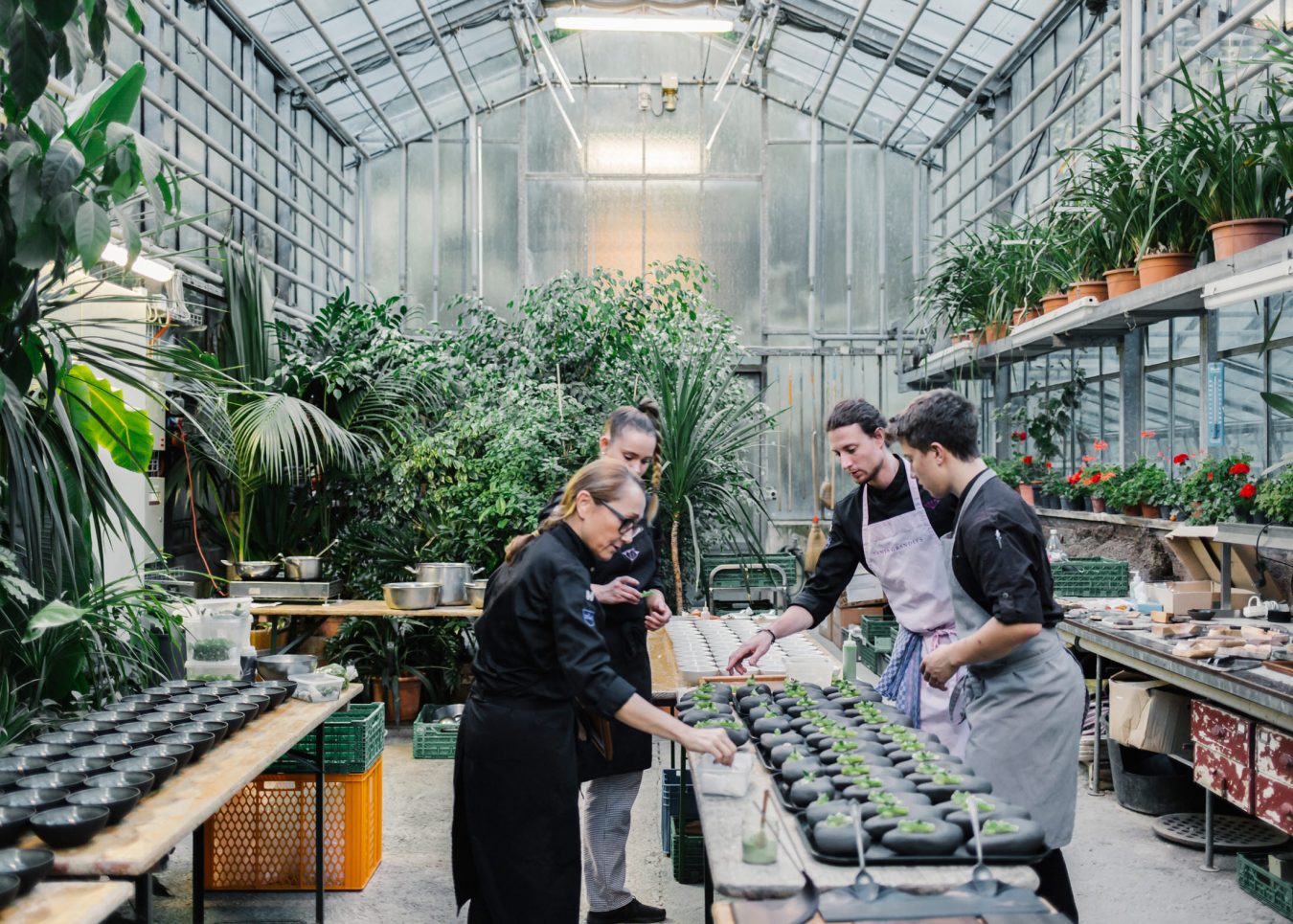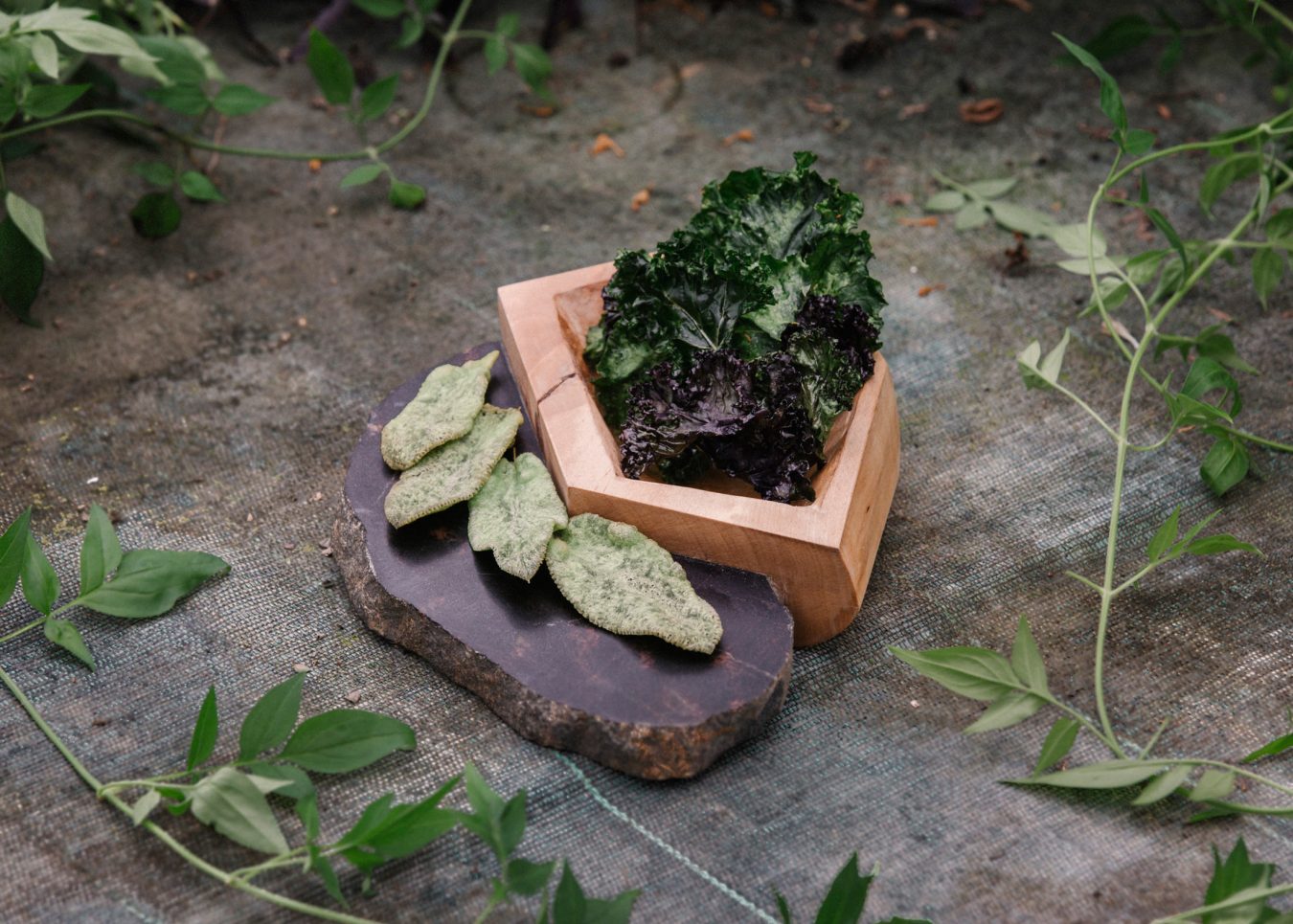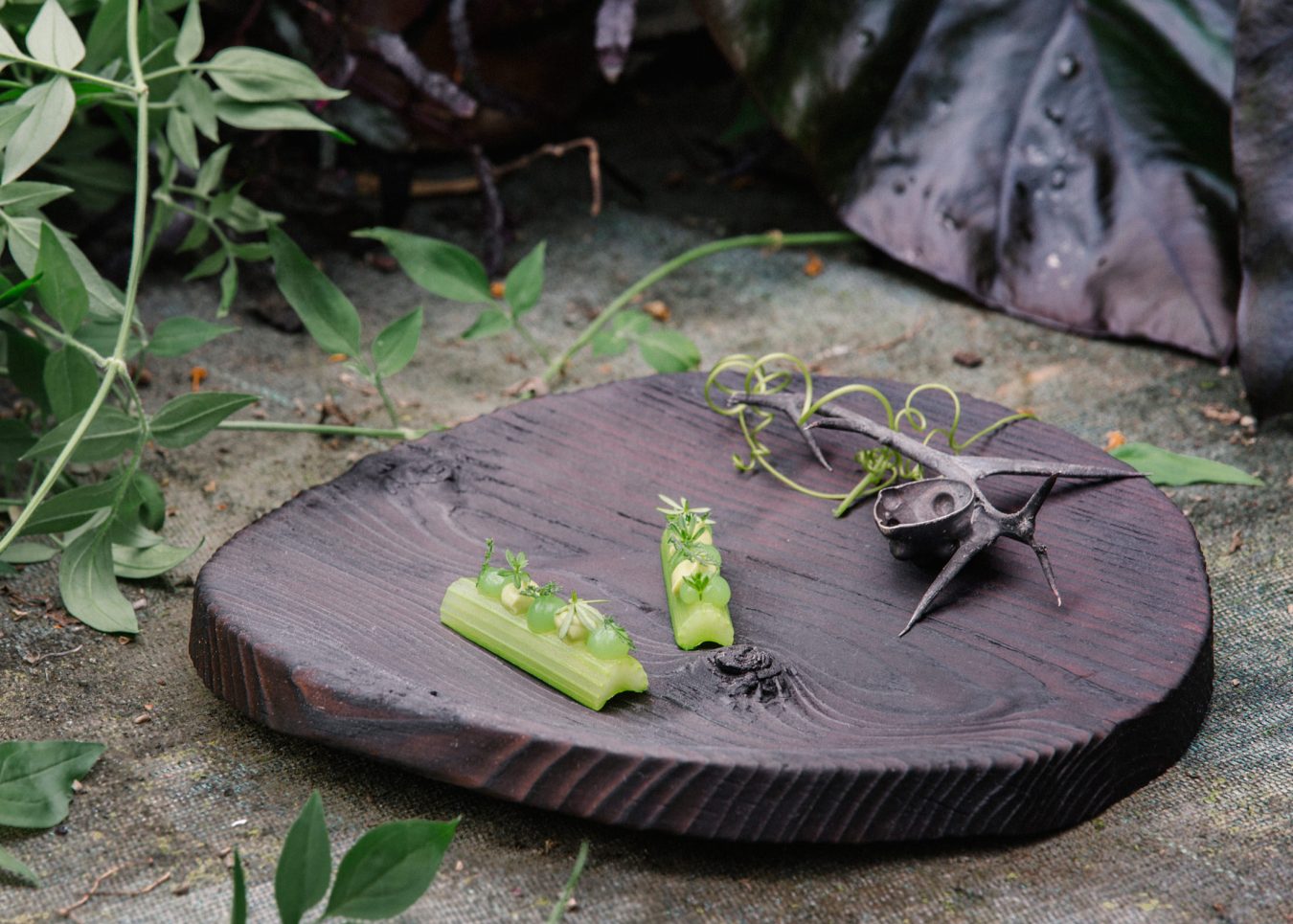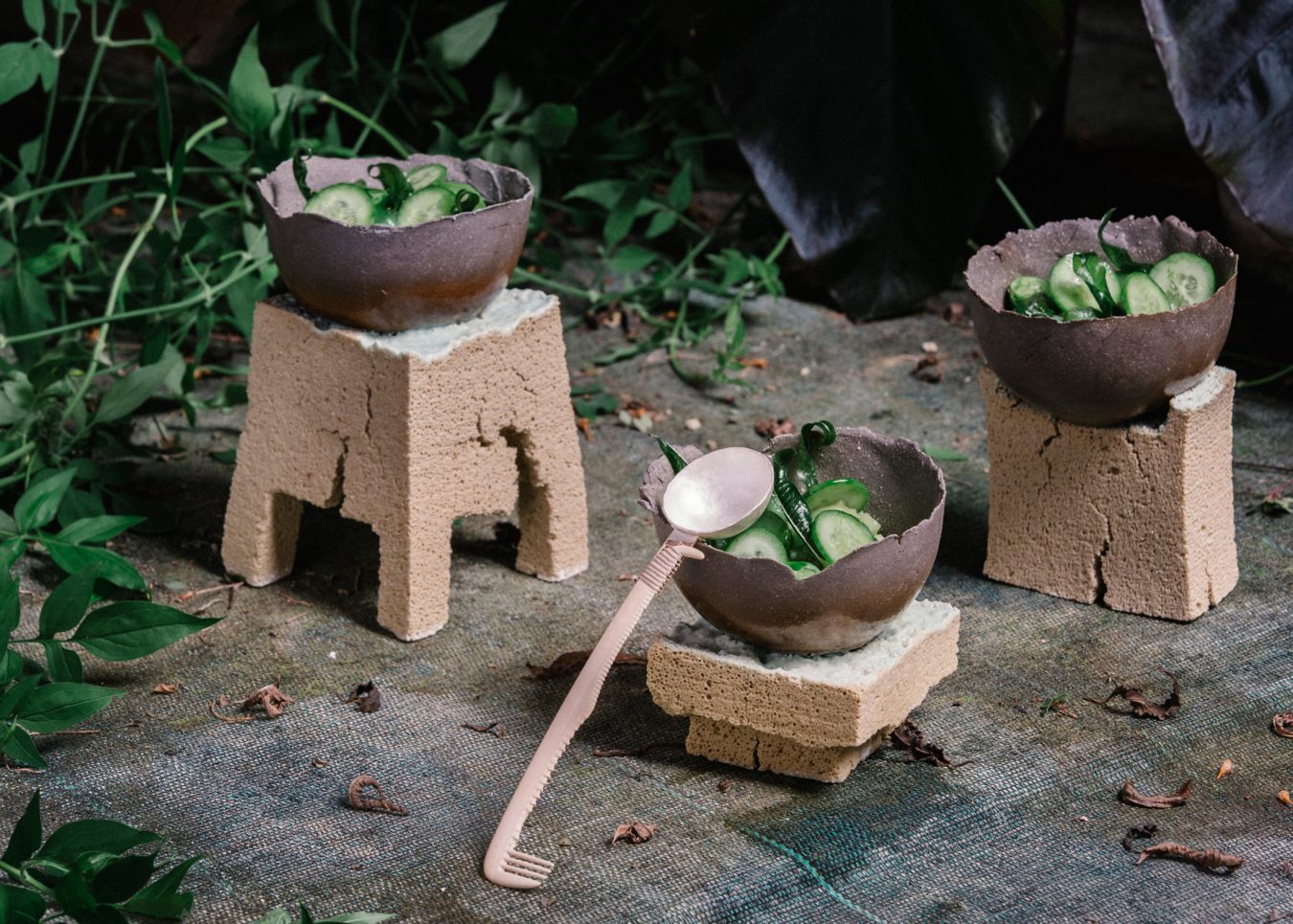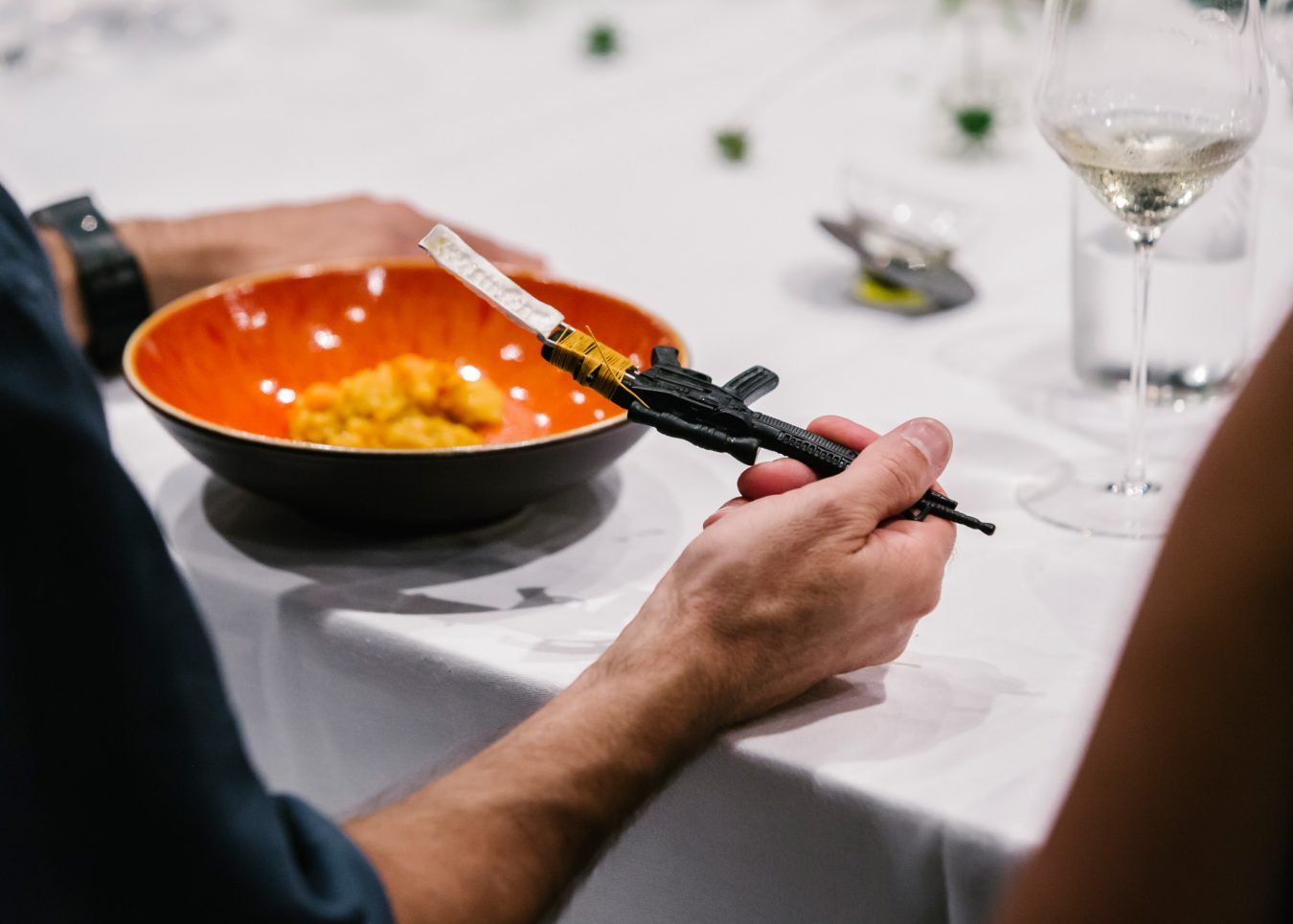It was early afternoon at California’s luxurious Villa Montalvo, and things weren’t going as planned. Towering piles of boxes filled with paper-wrapped, one-of-a-kind plates and utensils were being unpacked in the Mediterranean Revival mansion, and guests were set to arrive within the hour. A team of Michelin-starred chefs had prepped this $700 multi-course experimental meal for days, but as the untraditional dishware was laid out, they began threatening mutiny. Part of the problem? The cutlery didn’t look like cutlery at all.
“One of the chefs said, ‘This is ridiculous, how are people going to eat with this stuff? It’s not going to happen,’” recalls chef David Kinch of Manresa, one of The World’s 50 Best Restaurants, located in nearby Los Gatos. “But it was a performance art piece; I was fine with that.”
As food continues to evolve—think Alinea’s whimsical small plates, or Ferran Adria’s acrobatics—utensils have remained largely undisturbed. Using cutlery is part of our unconscious programming, the movements so routine and mundane that they are essentially deleted from our perceived experience. Through the avant-garde dining series Steinbeisser, which means “biting on a rock,” East German-born curator Martin Kullik aims to make eating harder, or at least radically different, in the hopes of bringing diners closer to what it means to truly eat.
Now living in the Netherlands, Kullik says his mother’s experiences living in a socialist country influenced his thinking on food, utility, and joy. “It’s scary how function-oriented a society can become with a waiting list for two types of cars,” he says. “That creates a very monotonous, very production-oriented environment.” Using a spoon that doesn’t look like a spoon, he says, can provoke funny, upsetting, or unexpected reactions.
At that Steinbeisser dinner in California, the cutlery included a long black industrial wrench with one end hammered into two intersecting golden forks, and a primordial, nearly-impossible-to-hold rusty-red bronze spoon embedded with iron nails.
“Not everyone’s going to be happy. It tests people’s expectations.”
“Chefs are control freaks. We want to get as close as we possibly can to guaranteed success, which means we have to be in control. That was taken away from us,” says Kinch. For him, the defining memory of Steinbeisser was when he saw the soft-spoken Kullik at his most emphatic. When the chefs were close to revolt,” Martin said, ‘No, we’re not changing anything. It might not conventionally work, but people are going to have figure it out,’” Kinch recalls. Despite the apprehension, dishes eventually hit the tables, and the delighted and occasionally baffled diners broached their meals. Kinch served delicate stuffed peppers and tomatoes on elaborate carved walnut bowl-spoon hybrids requiring group coordination to eat, while Dalí-esque shattered plates fused together into new forms held rice and vegetables. All the while Kullik circled and observed, handing out easier cutlery to frustrated diners or more taxing tools to those wanting a bigger challenge. “Not everyone’s going to be happy. It tests people’s expectations,” says Kinch. “That’s the whole point.”
Nine months later, on a sunny spring morning, I’m welcomed into the minimalist Amsterdam apartment Kullik shares with his partner Jouw Wijnsma. Sitting on the concrete floor of their balcony, I’m served a thick wedge of sourdough—baked by a chef-collaborator turned friend—alongside a puddle of olive oil and a giant ceramic mug of chamomile tea. The heavy cup is glazed in jewel-toned blotches and requires clutching with both hands; mine barely span its diameter. With eyes the colour of a tropical ocean, Kullik’s gaze is intense, unblinking. The passions that led him to Steinbeisser and its affiliated online utensil and dishware shop Jouw are broad: from jewellery to biodynamic food and sustainability.
Five years ago, Kullik and Wijnsma staged an interdisciplinary exhibit featuring two Dutch and Venezuelan dancers performing with pottery; the pottery was smashed during the opening of the performance, and the shards were later made into jewellery. Shortly after, Kullik approached Amsterdam’s Lloyd Hotel & Cultural Embassy looking for studio space, and was given a three-month trial residency. It was there the pair put on their first supper: a 27-person, 27-Euro dinner with experimental cutlery.
Estonian blacksmith Nils Hint was one of the first artists recruited to make cutlery specifically for these dinners. Initially, he experimented with welded cages of geometric shapes. His current work involves tools—including the wrench used at the California dinner—transforming one end into a delicate, gold-plated utensil.
Holding Hint’s work is an exercise in contradictions. The experience of eating Kullik’s homemade carrot-coconut soup, with an iron drill bit in my right hand and the delicate bowl of Hint’s golden spoon in my mouth, is inexplicably beautiful and weird. Is this the most incredible soup I’ve ever eaten? Or is it that I’ve never really used a spoon before? Sure, it’s not the most efficient way to consume food, but there’s something striking about it. “The world is not just about being productive,” Kullik says with a soft smile as he watches me eat. “Life is about experiences.”

